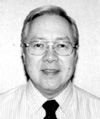Joblessness and underemployment
- Details
- Blog Content
- Hits: 4256
(First published in the February 23, 2013 issue of the Philippine Daily Inquirer)
This week (2/18/2013), Social Weather Stations reported that adult joblessness was 24.6 percent in its survey for the fourth quarter, done on Dec. 8-11, 2012. It was the lowest joblessness rate of 2012, having been 29.4 percent in August, 26.6 percent in May, and 34.4 percent in March.
The strong drop in joblessness by about 10 points from March to December should be noted. It is important for such movement to continue, so that joblessness can return to the relatively benign levels of 15 percent or less, where it was prior to 2004. Joblessness has been at least 20 percent for close to a decade now.
(In this piece, the term “joblessness” refers exclusively to SWS statistics, where the jobless are survey respondents who say they have no job at present, and are looking for one. The terms “unemployment” and “underemployment” will refer to the official statistics; the distinctions will be clarified later.)
I would not attribute the recent drop in joblessness to seasonality, since joblessness does not always fall in the fourth quarter of a year. In fact, joblessness rose in the fourth quarters of both 2011 and 2010. Prior to 2012, however, joblessness did fall in the fourth quarters of 2004 to 2009. In the entire SWS data series of 1993-2012, joblessness dropped 13 times, and rose eight times, from the third to the fourth quarter of the year.
It is rare for the joblessness rate of the fourth quarter to be the lowest rate of the year; it happened only four times during 1993-2012. Thus the low joblessness at the close of 2012 is relatively special.
Those looking for a job for the first time were only 3 percent of the adult labor force in the fourth quarter of 2012, compared to 5 percent in the second and third quarters, and 6 percent in the first quarter. The new 3-percent jobless rate of first-timers ties the lowest rate since 2009. It had reached as high as 7 percent three times—in September 2009, March 2010, and March 2011. It is encouraging to see the first-timers’ jobless rate trending generally downward over the last few years, and all throughout 2012 itself.
The most distressed among the jobless are those who lost their jobs involuntarily, due to some form of retrenchment. These retrenched-jobless totaled 10 percent in December 2012; they consisted of 7 percent whose work contracts expired and could not move into new ones, 2 percent whose employers closed, and 1 percent who were laid off. The retrenched-jobless previously totaled 13 percent in August, 11 percent in May, and 12 percent in March. It is also encouraging that 2012 closed with the retrenched-jobless at its lowest level.
Most of the time, the plurality of the jobless are those who voluntarily left their old jobs, and are hence looking for better ones. They totaled 11 percent in December 2012, compared to 12 percent in August, 10 percent in May, and 15 percent in March. These are people who chose to be temporarily jobless, while searching for work that is better paying, or more convenient to personal/family circumstances, or less hazardous, etc.
* * *
A typical SWS survey has two respondents: (a) an adult randomly drawn from among the adults, i.e., persons aged 18+, of the household, and (b) the head of the household. The random adult and the household head are sometimes the same person. Questions about labor-force status are addressed to both the random adult and the household head, providing jobless figures for both. SWS regularly reports the adult joblessness, since it can be analyzed together with optimism/pessimism, satisfaction with governance, and the many other core SWS indicators.
SWS classifies persons as having a job if they affirm that they have “trabaho sa kasalukuyan.” The time frame for having a job is the time of interview. The jobless are those who say they have no job, and are presently looking for a job. Those with no job, but not looking for one, are outside the labor force. The jobless-rate is taken as a proportion of the labor force (those with a job + the jobless).
The official Labor Force Survey (LFS), on the other hand, considers as employed those who worked for at least one hour during the past week. The time frame for being officially employed is the week prior to interview. The officially unemployed are those who (a) were virtually idle in the past week, and (b) were looking for work when interviewed. Since April 2005, there has been a third official criterion for unemployment: (c) being available for work should an opening come about within two weeks. (The SWS measure of joblessness has never changed. If immediate availability for a job is also considered, the SWS joblessness rate for December 2012 becomes 16.5 percent.)
The idleness-criterion tends to make official unemployment unrealistically low. Fortunately, the LFS also counts the underemployed, i.e., those looking for work even though not idle in the past week. Such persons, unhappy with whatever work they recently had, would probably call themselves jobless if interviewed by SWS.
The official underemployment rates are very large—double or even triple the unemployment rates—yet are hardly publicized. In the latest LFS of October 2012, official unemployment was 6.8 percent, and official underemployment was 19.0 percent (www.nscb.gov.ph/secstat/d_labor.asp).
Regardless of source, the message is clear: One of every four laboring Filipinos wants a real job.
* * *
 Mahar Mangahas is the president of Social Weather Stations (SWS). Contact SWS: or This email address is being protected from spambots. You need JavaScript enabled to view it..
Mahar Mangahas is the president of Social Weather Stations (SWS). Contact SWS: or This email address is being protected from spambots. You need JavaScript enabled to view it..

